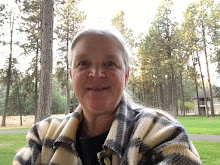Ahh...The days are getting longer and warmer, but be careful with those tender young seedlings. Cold nights can set your warm weather varieties back and they may not recover. A cold frame is a simple way to stretch the season out on both ends.

It can be used to harden off seedlings before they are transplanted out into the garden, store nursery bought plants until it is warm enough to plant out, or it can be planted directly with early or late crops of salad greens, spinach, or a warm weather plant such as tomato or peppers.
A cold frame is simply a specified area that can be enclosed with a material that lets light in and helps keep the temperature of the enclosed area warm and protected.
This can be done by surrounding the area with bales of hay or straw, cinder blocks, or a wooden framed box (without a bottom or lid).
The lid can be made from salvaged windows, fiberglass, or plastic sheeting. Be creative and see what you might have sitting around you can use.
The finished size will be determined by the material you use, but the ideal size is between 2-by4 feet and 3-by-6 feet. which allows you to reach to the back of the bed without stepping into it. The back should be 6-12" higher than the front to allow the maximum amount of light in and rain and snow to drain off easily.
Place the cold frame in the full sun with the slanted side facing the south to catch all the warming sun as possible. Protect from the wind as cold winds can suck the heat out of the box quickly. Make sure water drains away from the box.
The trickiest part of a cold frame is managing the internal temperature. On a sunny day the temperature inside can rise quickly even though the outside temperature is still frigid. Ideally, the temperature inside should stay below 75 degrees for summer crops and 60 for cool-season crops. The rule of thumb is to open the lid of the box 6 inches once the daytime temperature reaches 40 degrees and open it completely if the temperature is over 50 degrees. Be sure and close it down in the late afternoon to trap heat in for the night. If temperatures are going to be into the low 20s, cover the lid with straw, insulation board, a tarp or blanket to help trap the heat. Remove it in the morning.
As you can see by my pictures there are many ways that you can protect your investment of time and money from the ravages of Mother Nature.
Happy Gardening,
Christy
See my newsletter at KootenaiCountyFarmersMarket.com for more gardening tips.

It can be used to harden off seedlings before they are transplanted out into the garden, store nursery bought plants until it is warm enough to plant out, or it can be planted directly with early or late crops of salad greens, spinach, or a warm weather plant such as tomato or peppers.
A cold frame is simply a specified area that can be enclosed with a material that lets light in and helps keep the temperature of the enclosed area warm and protected.
This can be done by surrounding the area with bales of hay or straw, cinder blocks, or a wooden framed box (without a bottom or lid).
The lid can be made from salvaged windows, fiberglass, or plastic sheeting. Be creative and see what you might have sitting around you can use.
The finished size will be determined by the material you use, but the ideal size is between 2-by4 feet and 3-by-6 feet. which allows you to reach to the back of the bed without stepping into it. The back should be 6-12" higher than the front to allow the maximum amount of light in and rain and snow to drain off easily.
Place the cold frame in the full sun with the slanted side facing the south to catch all the warming sun as possible. Protect from the wind as cold winds can suck the heat out of the box quickly. Make sure water drains away from the box.
The trickiest part of a cold frame is managing the internal temperature. On a sunny day the temperature inside can rise quickly even though the outside temperature is still frigid. Ideally, the temperature inside should stay below 75 degrees for summer crops and 60 for cool-season crops. The rule of thumb is to open the lid of the box 6 inches once the daytime temperature reaches 40 degrees and open it completely if the temperature is over 50 degrees. Be sure and close it down in the late afternoon to trap heat in for the night. If temperatures are going to be into the low 20s, cover the lid with straw, insulation board, a tarp or blanket to help trap the heat. Remove it in the morning.
As you can see by my pictures there are many ways that you can protect your investment of time and money from the ravages of Mother Nature.
Happy Gardening,
Christy
See my newsletter at KootenaiCountyFarmersMarket.com for more gardening tips.

1 comment:
hi, Christy, just homened in on your site, like it very much. I have just got myself an allotment and this year I intend to grow a lot of organic food. one of the reasons is my hubby Tony has got Chrons disease and he needs organic food. my allotment borders my garden so I have had a gate put in.I am excited about the prospects of growing and eating my own veg.
good luck with your garden
regards Philomena uk
Post a Comment